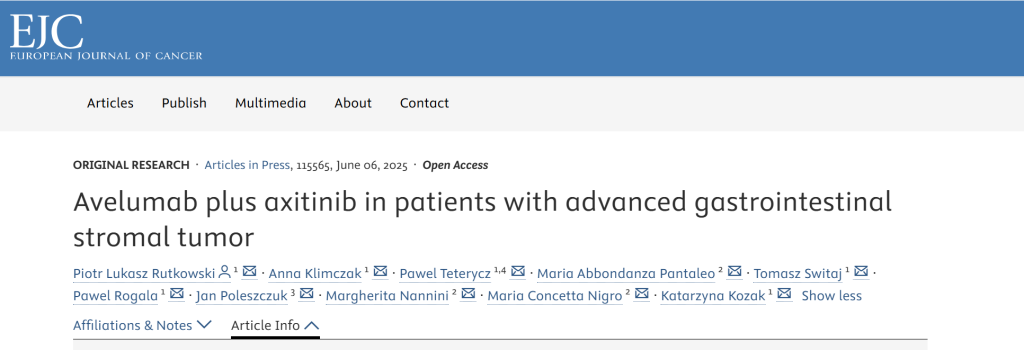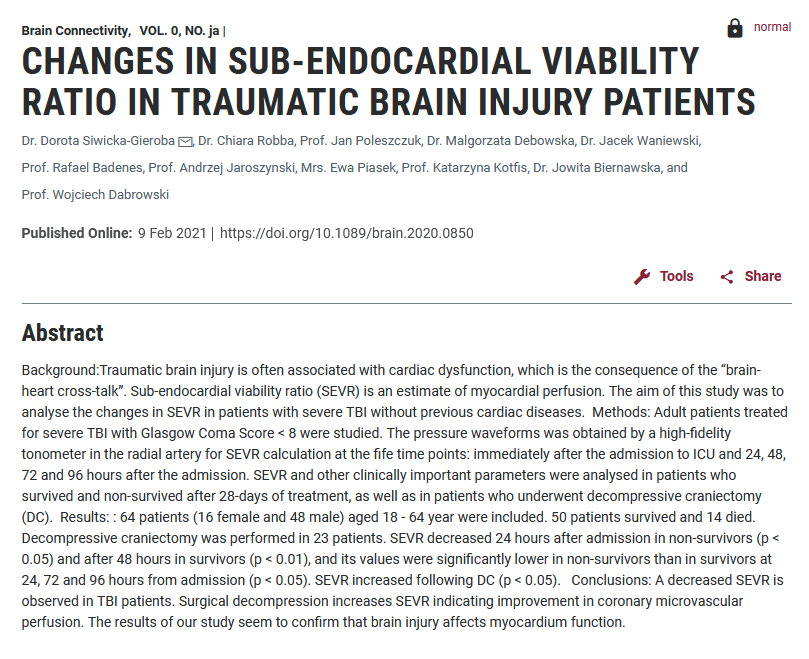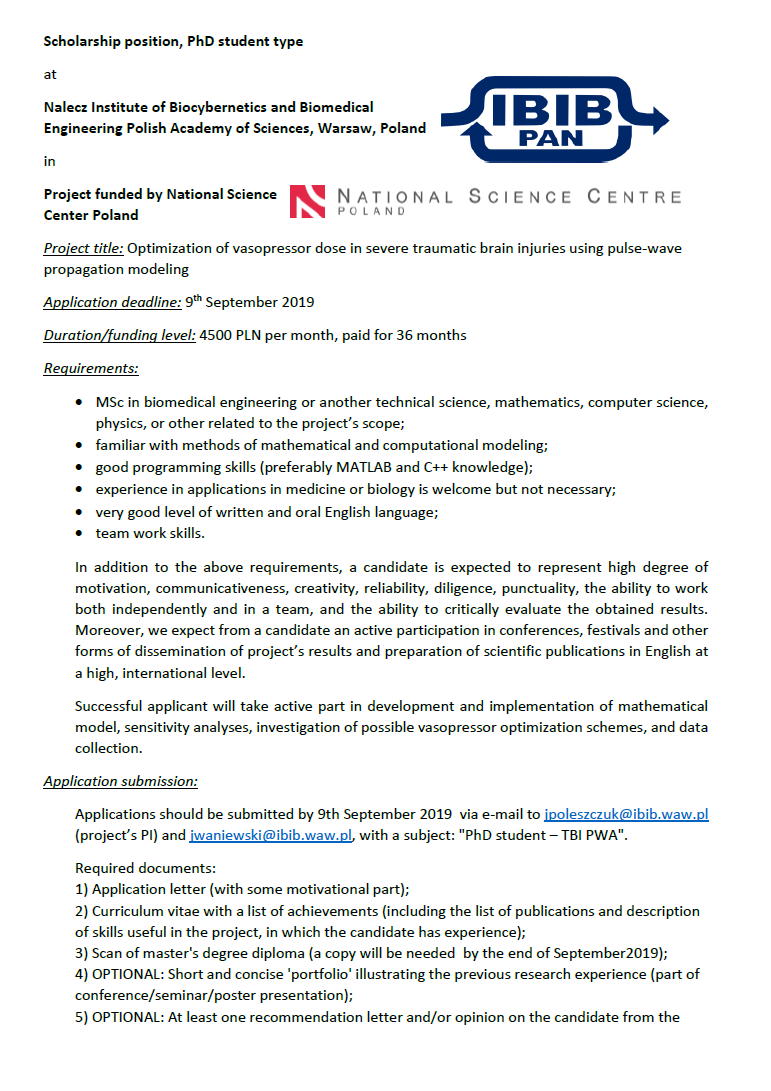Author Archives: poljan86
Microsimulation of colorectal cancer screening strategies

Colorectal cancer (CRC) is the second most frequent solid cancer and the third leading cause of cancer related death. There is tremendous potential to reduce CRC incidence and CRC related death via CRC screening. The evidence for many CRC screening interventions is incomplete and for some highly relevant questions no high-quality data are available. For instance, even though colonoscopy is considered the gold standard for CRC screening, there is no randomized controlled colonoscopy study for CRC screening. Microsimulation is an attractive tool to assess effects of CRC screening on a population. Microsimulation models are used for forming medical policies which allocate billions of dollars to specific CRC screening and surveillance interventions. However, existing tools for CRC microsimulation are currently strictly proprietary, and predictions cannot be independently advanced. Moreover, sensitivity analysis is usually insufficient and the space of uncertainty in basic parameters barely explored. Finally, current microsimulation studies do not provide personalized predictions.
We recently developed the microsimulation tool Colon Modeling Open Source Tool (CMOST). CMOST captures the natural history of CRC via early and advanced adenomas, accounting for gender, age, location within the colon and individual differences in CRC risk and allows simulating screening interventions. Detailed calibration and validation was performed and we continue to develop CMOST and try to apply it to answer various clinical questions.
PhD student position available.
We are looking for motivated PhD student to do some microsimulation modeling.

Description of the planned projects can be found here.
Applications due 31st of March 2021.
Email me or write on Twitter for more details.
Digital Health in Poland – debate during ImpactCEE
 During the ImpactCEE I had a pleasure to discuss the initial results from the study of digital health market in Poland performed by Roche and Startup Poland. The main resulting message was that, by removing obstacles and exchanging know-how, we are getting closer to the day when we will see digital health innovation in Poland on a daily basis. Other debate participants were Przemyslaw Kurczewski from Narodowe Centrum Badań i Rozwoju, Agnieszka Kister z Centrum e-Zdrowia, Tomek Snazyk from Startup Poland, and Mariusz Mulas from Roche.
During the ImpactCEE I had a pleasure to discuss the initial results from the study of digital health market in Poland performed by Roche and Startup Poland. The main resulting message was that, by removing obstacles and exchanging know-how, we are getting closer to the day when we will see digital health innovation in Poland on a daily basis. Other debate participants were Przemyslaw Kurczewski from Narodowe Centrum Badań i Rozwoju, Agnieszka Kister z Centrum e-Zdrowia, Tomek Snazyk from Startup Poland, and Mariusz Mulas from Roche.
PhD student position available.
I’m looking for motivated PhD student to do some mathematical modeling of cardiovascular system in close collaboration with the clinic.
Description of the planned projects can be found here.
Applications due 9th September 2019.
Email me or write on Twitter for more details.
Our new paper about radiotherapy and surgery sequencing is out
Early-stage cancers are routinely treated with surgery followed by radiotherapy (SR). Radiotherapy before surgery (RS) has been widely ignored for some cancers. We evaluate overall survival (OS) and disease- free survival (DFS) with SR and RS for different cancer types and simulate the plausibility of RS- and SR-induced antitumor immunity contributing to outcomes.
Our study results suggest plausibility that radiation to the bulk of the tumor could induce a more robust immune response and better harness the synergy of radiotherapy and antitumor immunity than postsurgical radiation to the tumor bed. This exploratory study provides motivation for prospective evaluation of immune activation of RS versus SR in controlled clinical studies.
PhD student positions available!
I’m looking for motivated PhD students (up to 3 positions available) to do some mathematical modeling in oncology (tumor-immune system interactions; immunotherapy response) and cardiovascular system (pulse wave propagation models) with close collaboration with the clinic.
Description of the planned projects can be found here: PhD_projects
Decent scholarship for up to 4 years is provided.
Applications due mid January 2019.
Email me or write on Twitter for more details.
Our new paper about radiotherapy-immune system synergy
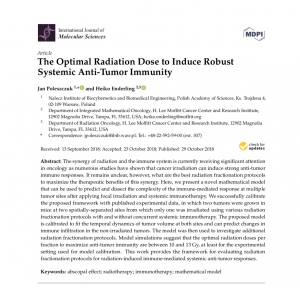 The synergy of radiation and the immune system is currently receiving significant attention in oncology as numerous studies have shown that cancer irradiation can induce strong anti-tumor immune responses. It remains unclear, however, what are the best radiation fractionation protocols to maximize the therapeutic benefits of this synergy. Here, we present a novel mathematical model that can be used to predict and dissect the complexity of the immune-mediated response at multiple tumor sites after applying focal irradiation and systemic immunotherapy. We successfully calibrate the proposed framework with published experimental data, in which two tumors were grown in mice at two spatially-separated sites from which only one was irradiated using various radiation fractionation protocols with and without concurrent systemic immunotherapy. The proposed model is calibrated to fit the temporal dynamics of tumor volume at both sites and can predict changes in immune infiltration in the non-irradiated tumors. The model was then used to investigate additional radiation fractionation protocols. Model simulations suggest that the optimal radiation doses per fraction to maximize anti-tumor immunity are between 10 and 13 Gy, at least for the experimental setting used for model calibration. This work provides the framework for evaluating radiation fractionation protocols for radiation-induced immune-mediated systemic anti-tumor responses.
The synergy of radiation and the immune system is currently receiving significant attention in oncology as numerous studies have shown that cancer irradiation can induce strong anti-tumor immune responses. It remains unclear, however, what are the best radiation fractionation protocols to maximize the therapeutic benefits of this synergy. Here, we present a novel mathematical model that can be used to predict and dissect the complexity of the immune-mediated response at multiple tumor sites after applying focal irradiation and systemic immunotherapy. We successfully calibrate the proposed framework with published experimental data, in which two tumors were grown in mice at two spatially-separated sites from which only one was irradiated using various radiation fractionation protocols with and without concurrent systemic immunotherapy. The proposed model is calibrated to fit the temporal dynamics of tumor volume at both sites and can predict changes in immune infiltration in the non-irradiated tumors. The model was then used to investigate additional radiation fractionation protocols. Model simulations suggest that the optimal radiation doses per fraction to maximize anti-tumor immunity are between 10 and 13 Gy, at least for the experimental setting used for model calibration. This work provides the framework for evaluating radiation fractionation protocols for radiation-induced immune-mediated systemic anti-tumor responses.
Editorial board member for Mathematical Biosciences and Engineering journal (AIMS)
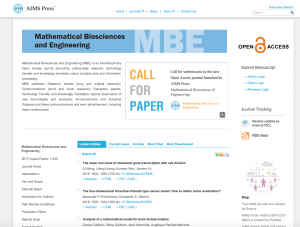 I’m proud to join the Editorial Board of the Mathematical Biosciences and Engineering journal by AIM Sciences. Please consider submitting to Biosciences section lead by Heiko Enderling.
I’m proud to join the Editorial Board of the Mathematical Biosciences and Engineering journal by AIM Sciences. Please consider submitting to Biosciences section lead by Heiko Enderling.
http://www.aimspress.com/news/294.html
Mathematical Biosciences and Engineering (MBE) is an interdisciplinary Open Access journal promoting cutting-edge research, technology transfer and knowledge translation about complex data and information processing.
MBE publishes Research articles (long and original research); Communications (short and novel research); Expository papers; Technology Transfer and Knowledge Translation reports (description of new technologies and products); Announcements and Industrial Progress and News (announcements and even advertisement, including major conferences).

